Almost all plants, especially perennials, require water and sun to thrive, yet not all thrive under the same amount or even much.

While you won't blame some people for thinking that shade is a barrier to any colorful garden plant, that is not the case or not entirely true.
Even though your perennial palette may not be as abundant as it is in a sunny landscape, you'll still find some varieties of great shade loving perennial flowers and plants that bloom beautiful flowers throughout the season.
These plants include Indian Pink, Ligularia, Astilbe, Barrenwort, Hydrangeas, Goat's beard, etc.
Let’s quickly learn more about these plants!
Jump to:
- What Are Shade Loving Perennial Plants?
- Shade Loving Perennial Flowers and Plants
- 1. Indian Pink (Spigelia marilandica)
- 2. Leopard Plant (Ligularia Spp.)
- 3. Astilbe (Astilbe spp.)
- 4. Barrenwort (Epimedium grandiflorum)
- 5. Hydrangeas
- 6. Goat's Beard (Aruncus dioicus)
- 7. Japanese Primrose (Primula japonica)
- 8. Bellflower (Campanula)
- 9. Cardinal Flower (Lobelia cardinalis)
- 10. Hostas (Hosta spp.)
- 11. Yellow Bleeding Heart (Corydalis lutea)
- 12. Hardy Begonia (Begonia grandis)
- 13. Woodland Stonecrop (Sedum ternatum)
- 14. Carpathian Bellflower (Campanula carpatica)
- 15. Bigfoot Geranium (Geranium macrorrhizum)
- 16. Lily of the Valley (Convallaria majalis)
- 17. Sweet Woodruff (Galium odoratum)
- 18. Black Cohosh (Actaea racemosa)
- 19. Rodgersia (Rodgersia aesculifolia)
- 20. Berry Exciting Corydalis (Corydalis anthriscifolia 'Berry Exciting')
- 21. Toad lily (Tricyrtis species)
- 22. Rozanne (Geranium great)
- 23. Columbine (Aquilegia spp.)
- 24. Big Betony (Stachys macrantha)
- 25. Deadnettle (Lamium purpurem)
- How to Grow Shade Loving Perennial Plants
- Frequently Asked Questions
- Conclusion
What Are Shade Loving Perennial Plants?
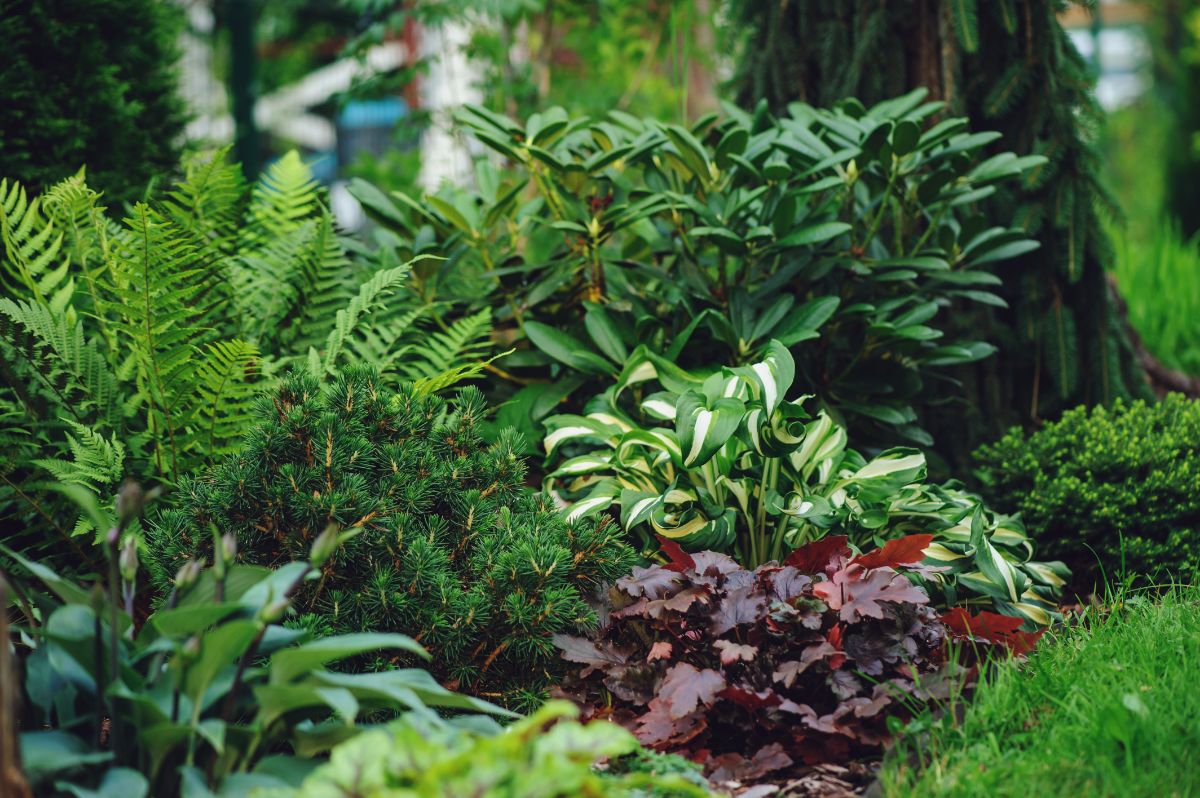
In the garden, the term 'shade' simply means low-light environments. In other words, shade loving perennial flowers and plants do best in the shade or other low-light areas. Shade conditions are of two groups: partial shade and full shade.
Plants that do well in partial shade thrive where they are protected from sunlight by mid-day when the sun is hottest. You can also see partial shade as an area where the plants get dappled or filtered sunlight, probably in a covered area of a small shade tree or under a pergola or trellis.
On the other hand, plants that do best in full shade conditions do not get any direct sun. Even though they do, the light often comes as a reflection or heavily filtered light. These full shade conditions are often underneath trees or on the north side of buildings.
As someone that likes shade-loving plants, you may be tempted to believe that you should focus on variegated or colorful foliage plants to enhance your landscape colors. However, while these foliage textures and hues are great colorful additions to a shady garden, there are also other great options, which are part those we have highlighted below.
Shade Loving Perennial Flowers and Plants
If you want to choose the right shade loving perennial flower or plant for your landscape, you must consider how much shade each of them loves. If full-shade perennial flowers and plants get more light than they can tolerate, it will cause them to have foliage burn, leaf curl, or even wilting.
To avoid selection headaches, you must pick from our tried and trusted list of 25 shade loving perennial flowers and plants for a healthy garden. And also, try to check out its essential tips for healthy growth and blooming.
1. Indian Pink (Spigelia marilandica)

If you are looking for the best shade loving perennial flower to vibrate your garden, you must not look past Indian Pink. It is at the top of our list for a reason. It is a beautiful flowering shade loving perennial that can reach up to 1 to 2 feet tall and grows attractive elongated red blooms unveiling into a yellow star.
The flowering time for this stunning plant is in June, and it can stay on for many weeks. Meanwhile, due to the lovely nature of this plant, it attracts hummingbirds and is a tough native plant that is hardy in USDA zones 5 to 9.
Indian Pink is a perfect option for shade gardens, and its red tubular blooms featuring a yellow, star-shaped center stand out.
2. Leopard Plant (Ligularia Spp.)
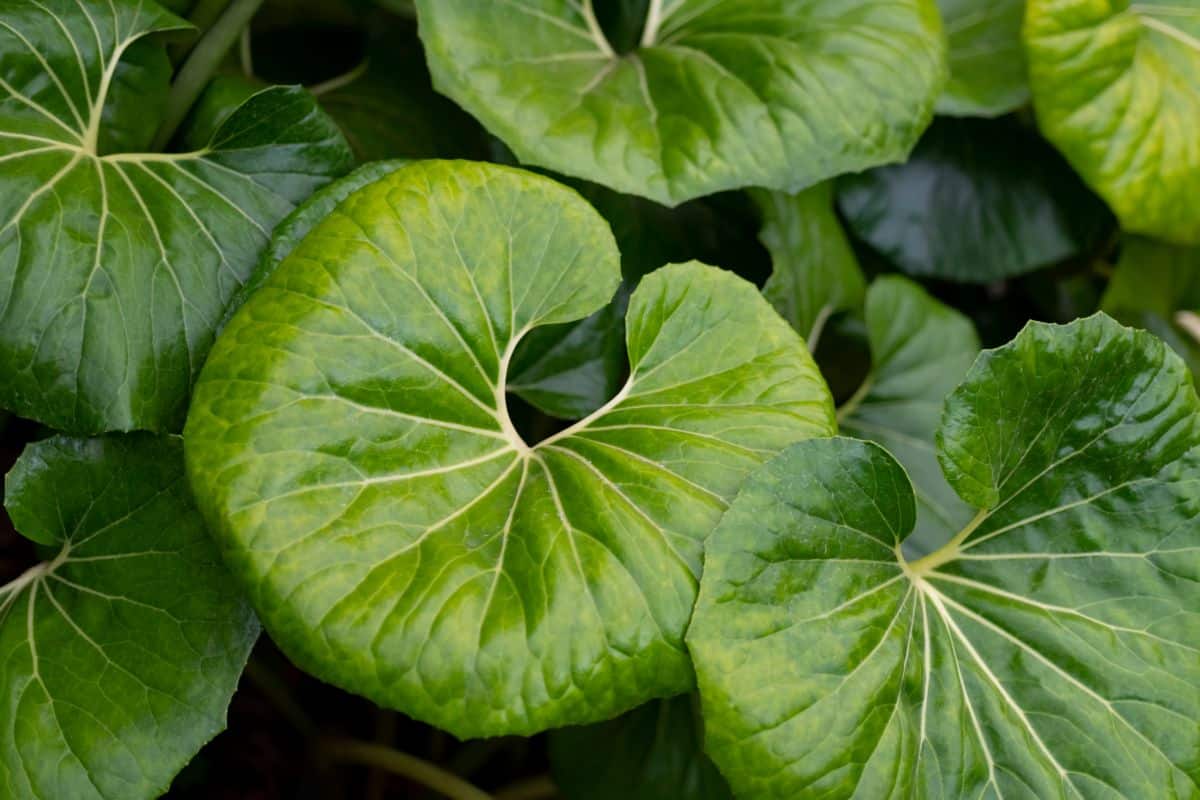
Another unique shade loving perennial flower on our top list is the Ligularia specie. It is a perfect pick if you want to grow a shade garden, not only because of its deer-resistant nature but because it will beautify your garden with its stunning, red-purple leaves.
Most commonly called Leopard Plant, this great perennial comes in different varieties, including one with yellow, daisy-looking blooms.
However, the ligularia specie provides the perfect option if you want a plant that has a large leaf structure. Other varieties may include Desdemona, Britt-Marie Crawford, The Rocket, etc.
3. Astilbe (Astilbe spp.)
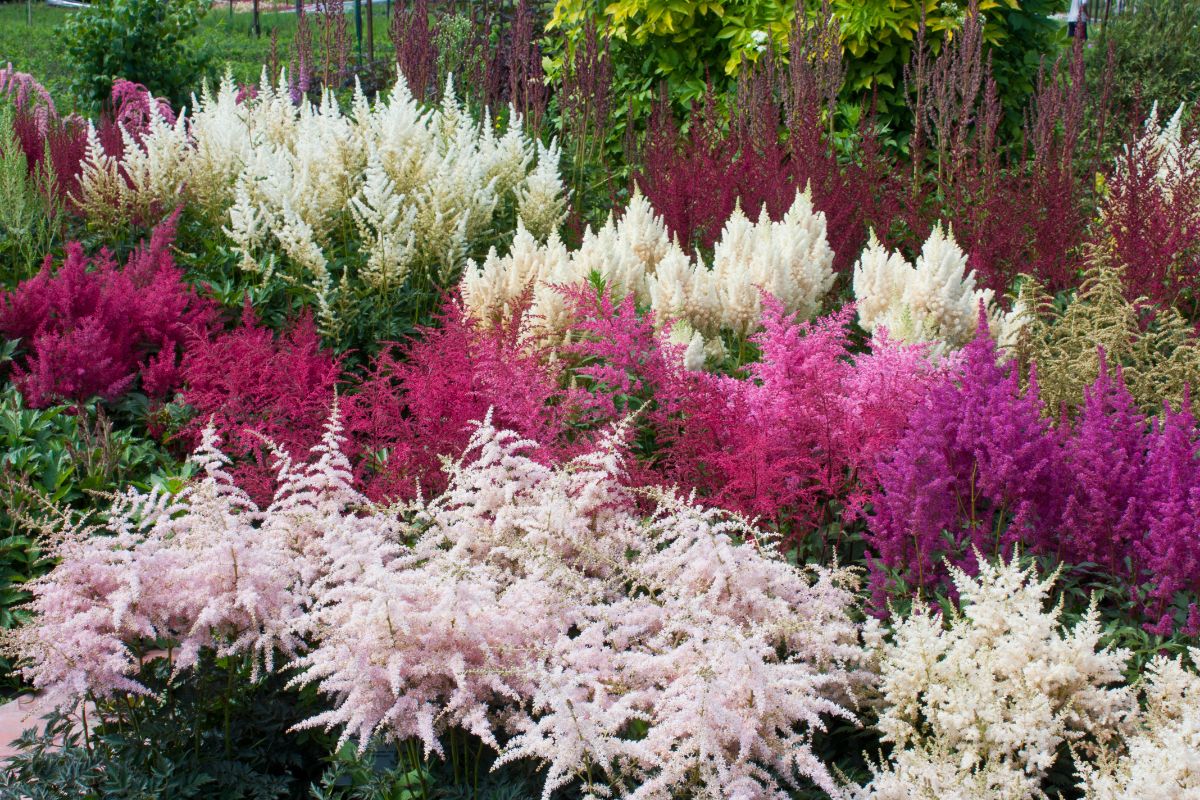
One of the best shades-loving flowering perennials on our list is the Astilbe specie. It is a plant that produces its flowers in the summer.
You can grow them either in full or partial shade conditions. It comes with different species like America and Bulmalda that have blooms in late summer.
Even though a single plant fails to flower throughout summer, you can combine different varieties to produce a season-long astilbe display. Meanwhile, astilbe comes in many color varieties, including shades of purple, pink, white, and red. It is hardy in USDA zones 5 to 9.
4. Barrenwort (Epimedium grandiflorum)
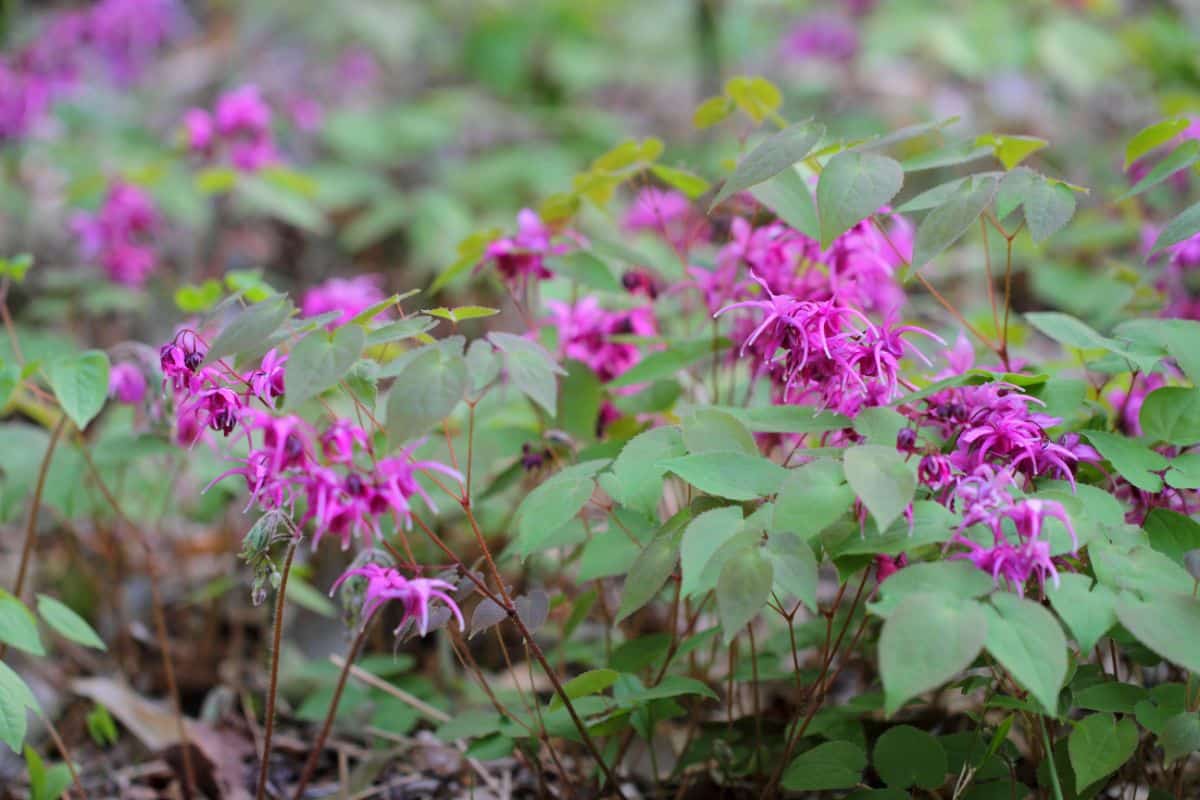
Talking about shade loving flowering perennials, one of the best of the lot is Barrenwort. Are you planning to add a trusted groundcover plant with distinct blooms? Then you have your typical plant in the form of the Epimedium grandiflorum.
This plant does best in full shade, even though it can survive a little bit of light. Even though Barrenwort thrives in moist soil, it can be hard to dry areas. In other words, it can survive some drought spells and is hardy in zones 4 to 8. It can reach around 1 foot in height.
It produces blooms of several color varieties, including white, purple, orange, yellow, and Pink, but sometimes have multiple colors simultaneously. It also has beautiful foliage in the fall, and its stunning flowers almost resemble butterflies while they flit on top of the foliage.
5. Hydrangeas
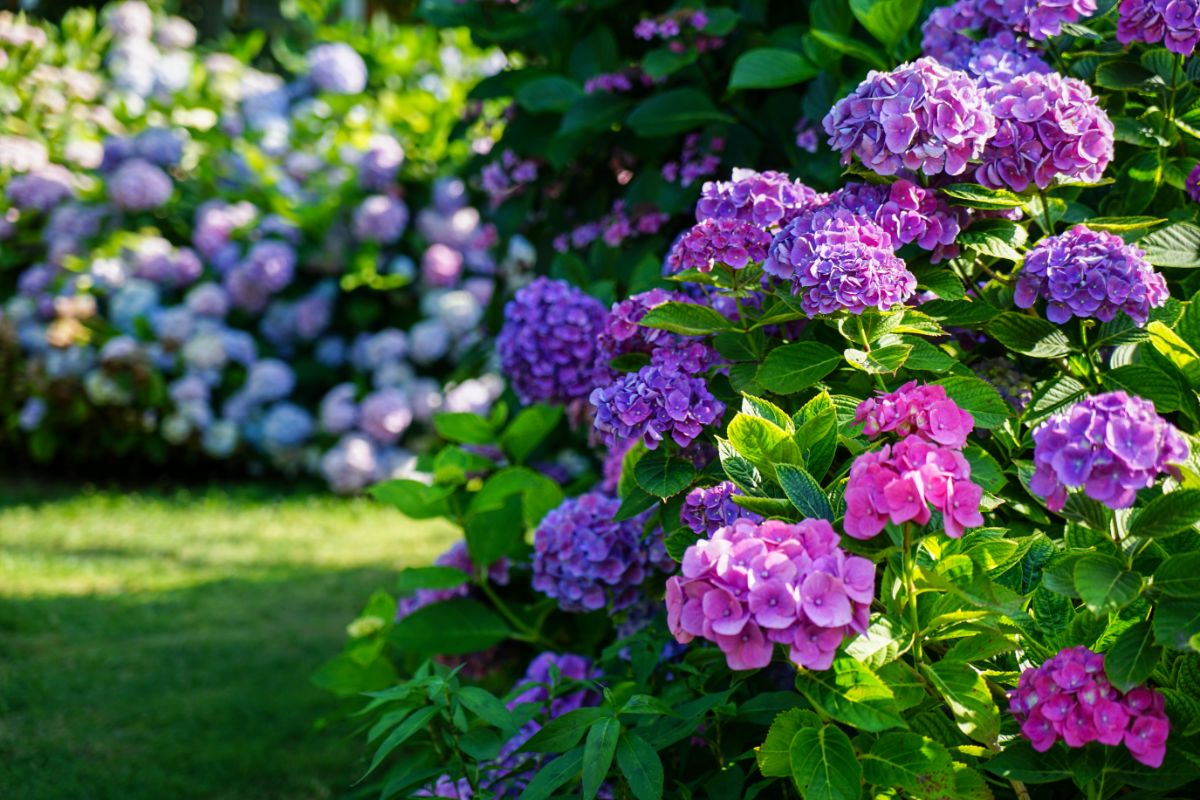
Who says you won't find shady perennials from which your garden can benefit? Well, sorry to disappoint you; Hydrangeas is just one of the several shade loving perennial flowers and plants that produces stunning flowers all season and will give your garden an exciting look and vibrant feel.
Hydrangeas love the morning sun but don't do well in hot summer afternoons. Therefore, the best location for them is around any spot where they can receive little sun every morning, but they are generally shade-loving perennial flowers that significantly need sheltered areas the rest of the day.
6. Goat's Beard (Aruncus dioicus)
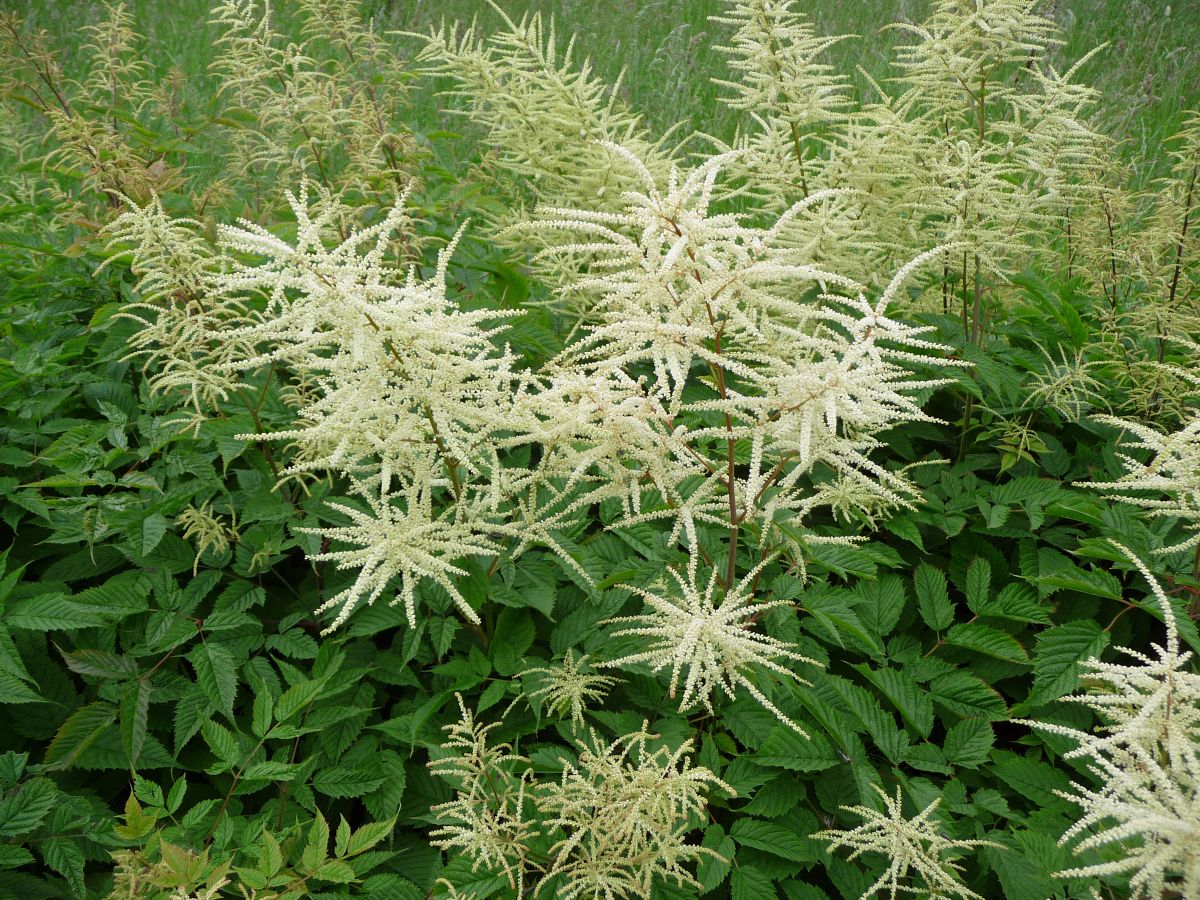
If you want a shade loving perennial plant that will look healthy and beautiful whether it is flowering or not, then Goat's Beard is the perfect option.
It is a perennial that produces giant feathery bloom plumes, adding color to your shade garden. Every plume is filled with many small star-shaped white flowers rising over the foliage in a group.
Even when Goat's beard is not blossoming, it still gives the garden a stunning appearance, thanks to its dark-green fern-like leaves. Scientifically called Aruncus dioicus, this unique perennial grows large, reaching around 4 to 6 feet tall and 2 to 4 feet wide.
It is a perfect plant that you can use as a hedge or border plant or even serve as one to brighten the background. Because of its fantastic colors and attractions, it draws different pollinators, especially the Dusky Azure Butterfly. The plant is hardy in USDA zones 3 to 9 and thrives in moderately moist, well-drained soil.
7. Japanese Primrose (Primula japonica)
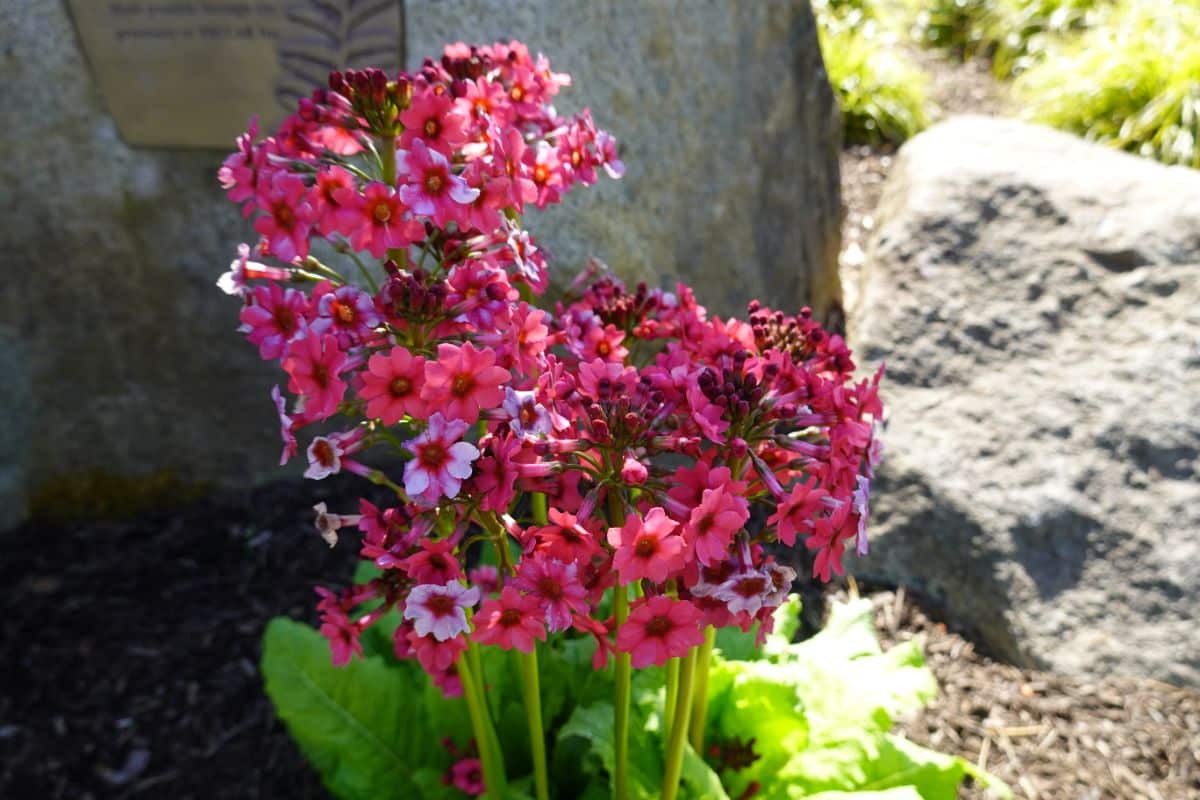
Even though the Japanese Primrose is not as tall as many plants in our top list, what it lacks in size and stature, it makes up with entrancing delicate whorls of blooms. It is a gorgeous plant that can brighten any garden, but it is the best option for damp and partially shaded areas.
Scientifically known as Primula japonica, Japanese primrose has foliage that resembles clumps of lettuce and is beautiful but too modest on its own.
Whenever this unique perennial starts to bloom, it transforms the whole plant. Each bloom cluster forms on top of a stem hovering over the lettuce-like leaves.
Japanese primroses are shade-loving plants does best in partially shaded conditions and wet areas, as that is where their flowers perform best. Its unique blooms draw pollinators like butterflies and come in many shades of color, especially pink, red, purple, and white. It is hardy in zones 4 to 8.
8. Bellflower (Campanula)
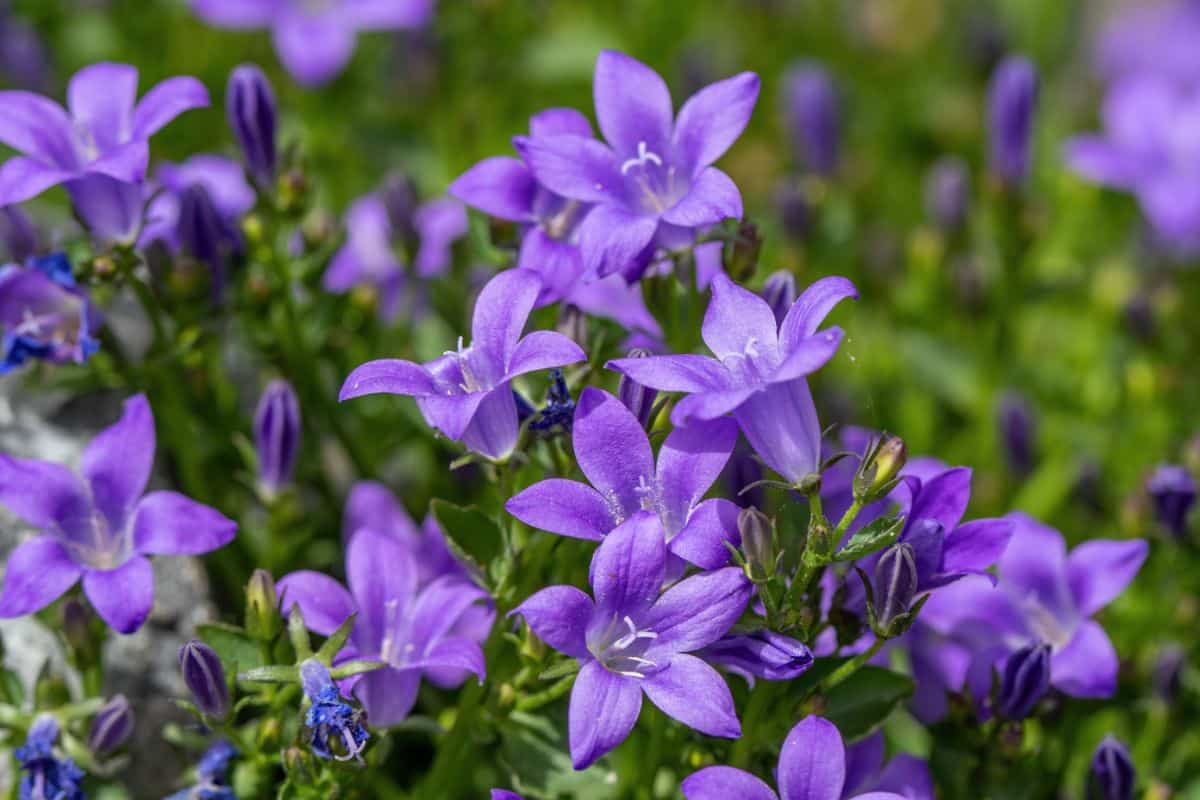
One of the most popular shade loving perennial flowering plants on our top list is Bellflower. It is another excellent option for shaded gardens and comes in many different sizes and colors, ranging from blue, pink, or white. It is also available both in the giant and dwarf versions.
Besides the features mentioned above, Bellflower features an extended flowering season lasting from June to autumn.
Hardy in USDA zones 3 to 4, the Campanula, scientifically called, is also a very colorful blooming perennial that can brighten your shaded garden. It prefers moderately moist, well-drained soil.
9. Cardinal Flower (Lobelia cardinalis)
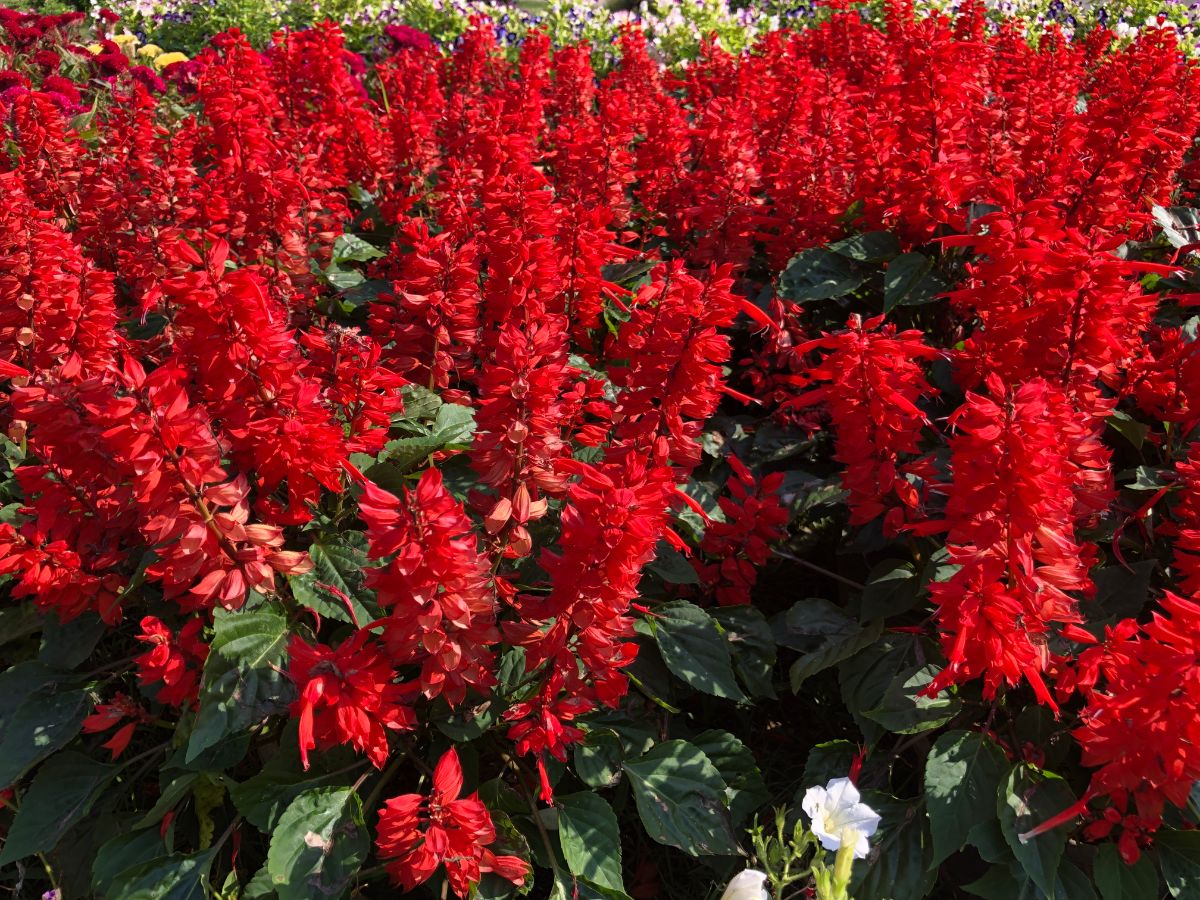
Another exciting shade loving perennial you can plant to brighten your shaded garden is Cardinal Flower. Apart from the coldest areas, this stunning plant does best in partial shade in every climatic region. Because of its attractive blooms, hummingbirds are drawn to it.
Hardy in USDA zones 3 to 9, the cardinal flower is an herbaceous perennial that comes with elegant, giant red flowers all summer and sometimes extends into early autumn. Meanwhile, the plant can grow as tall as 3 to 6 feet.
10. Hostas (Hosta spp.)

Hostas are one of the most common varieties you can find around. It is another perfect option for shaded gardens with moist soil. Even though your perennial palette is not as full as in a sunny landscape, hostas are a shade-loving perennial that blooms beautiful flowers all season.
This stunning plant is significantly a foliage plant with broadleaf and comes in different sizes, from small to large. One of its most popular varieties is Sum and Substance, a large specie about 5 feet wide.
In contrast, some others, like Mouse Ears, are very slender. Hostas thrive in moist, well-drained soil.
11. Yellow Bleeding Heart (Corydalis lutea)
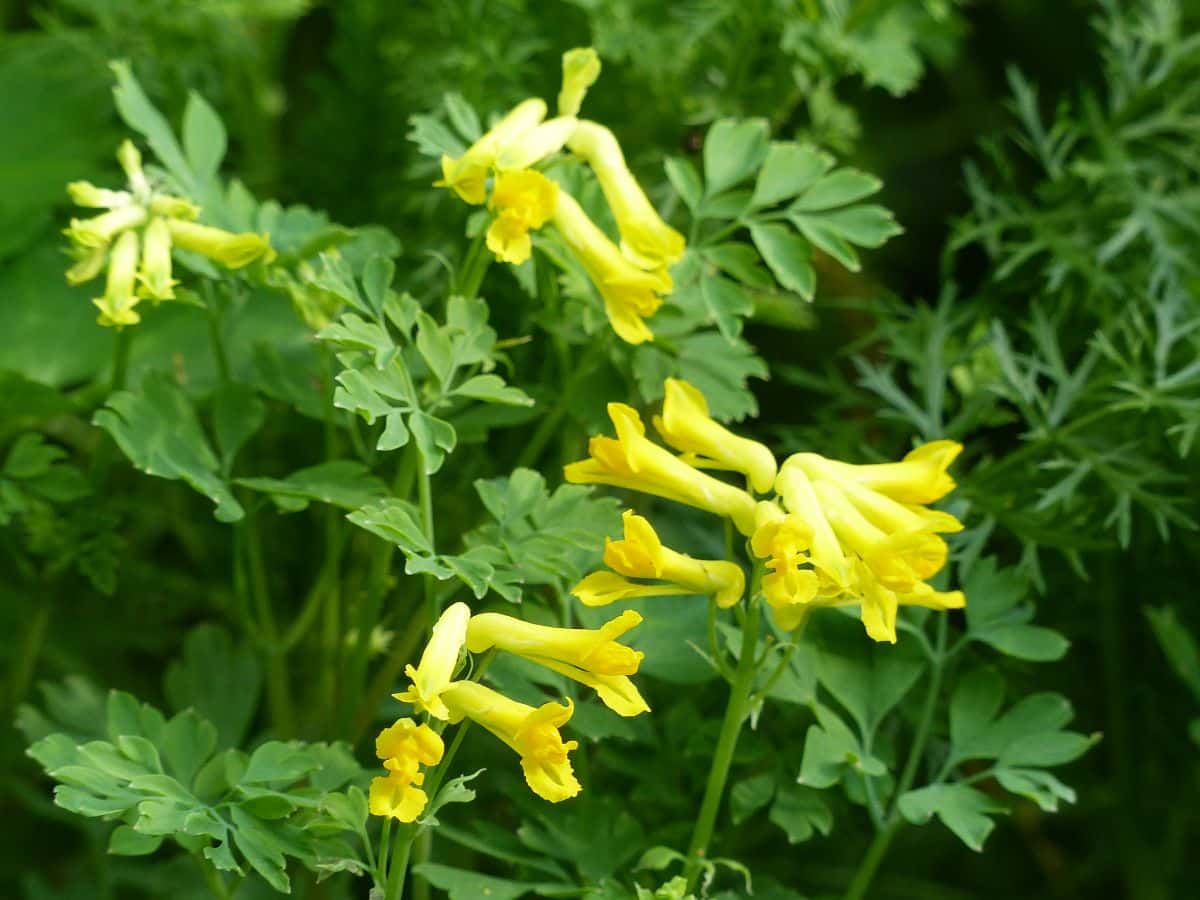
Are you looking for a sun loving flowering perennial that produces blooms for months rather than weeks? You will indeed find it in Yellow Bleeding Heart.
This perennial is hardy in USDA zones 5 to 7 and does best in full and partial shade. It is a self-sowing plant that can spread interestingly into a colony without weeding the unwanted seedlings.
It features blue-green 12 inches tall ferny foliage, which produces tidy mounds continuously protected with clusters of yellow, tubular blooms. It is one of the few flowering perennials you don't need to deadhead and is among the most extended flowering plants of every shade loving perennial flower around.
12. Hardy Begonia (Begonia grandis)

Most people still hardly believe that there's any such thing as Hardy Begonia. Of course, it is not just readily available but also one of the most interesting shade-loving perennial flowers you need to try out in your garden.
It has vast heart-shaped leaves and thick stems that are a source of attraction for shade gardeners. Hardy in USDA zones 6, the Begonia grandis is a shade-loving perennial that can reach up to 18 to 24 inches in height and blooms clusters of pink and red flowers from summer to fall.
Meanwhile, Hardy begonia can thrive in full shade, especially under a black walnut tree where nothing else seems to thrive. It has many species, but the most popular of them all include the likes of Heron's Pirouette and Pink Teardrop. Make sure you use moist, adequately drained soil.
13. Woodland Stonecrop (Sedum ternatum)
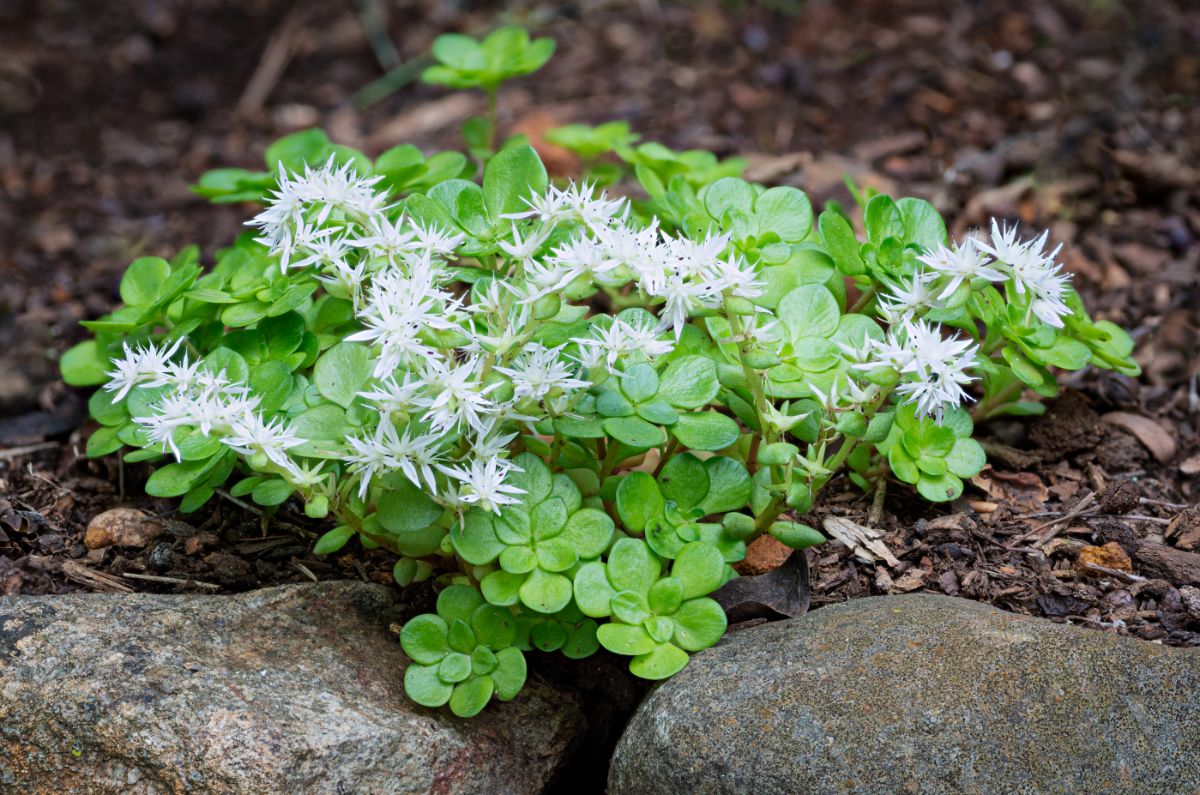
If you are looking for a perfect shade loving perennial that will make your garden stand out and become a colorful outlet, you can trust Sedum Ternatum to offer you much more. While sedum varieties can survive partial shade, one does best in full shade, called Sedum ternatum.
Commonly known as woodland stonecrop, this sedum species is native to the United States and is an easy-to-grow plant that thrives in damp, rocky soil.
As far as blooming is concerned, the sedum ternatum bears delicate but gorgeous white flowers. It is a sluggish growing plant that will reward you with its colorful appearance and is best planted with dwarf Japanese maple and hostas.
14. Carpathian Bellflower (Campanula carpatica)

Another shade loving perennial flower for a vibrant garden is Carpathian Bellflower. It is a stunning plant that blooms all summer and does best in partial shade. However, this plant is just one of the few sun-loving perennials that will survive in complete sun conditions.
Carpathian bellflower comes in many different species, all blooming fantastic bell-shaped flowers all summer. The Campanula carpatica also features shades of white, blue, and purple. It can grow up to 4 to 12 inches in height and width. Meanwhile, this plant is hardy in USDA zones 5 to 9.
15. Bigfoot Geranium (Geranium macrorrhizum)
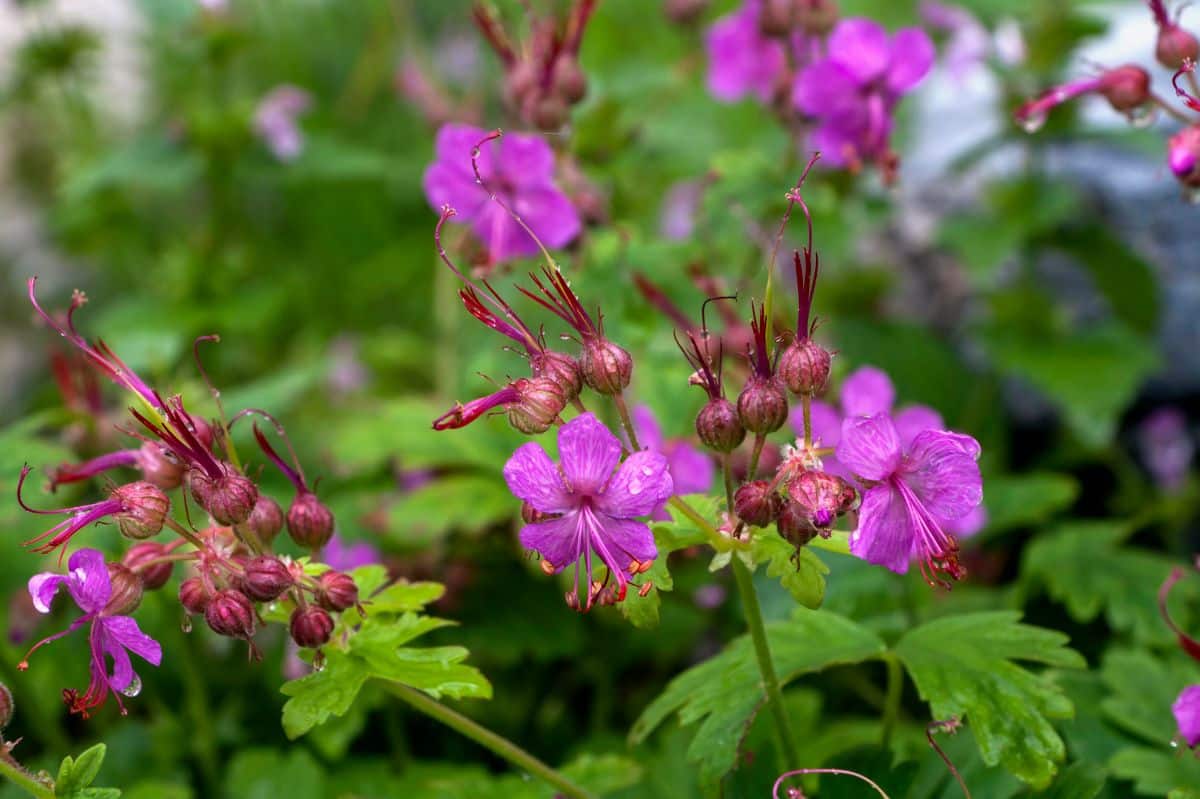
Are you looking for an ideal shade loving perennial plant that produces flowers that will add color to your garden? You must have heard of Bigfoot Geranium, a hardy groundcover perennial featuring rhizomes and fragrant-filled and distinctly shaped foliage.
This unique plant can reach up to 1 to 3 feet in height and is hardy in USDA zones 3 to 8. It produces magenta flowers, which rise over the plant's foliage in gentle bursts. It is another one of a few shade loving perennials that can survive under full sun and partial shade conditions.
The Geranium macrorrhizum specie adapts to the sun, and shady spots make it one of the most interestingly versatile plants you will ever find. Unlike several other shade loving perennials, the bigfoot geranium does not need pruning; you can get rid of the stems. Apart from that, it is a low-maintenance plant.
16. Lily of the Valley (Convallaria majalis)
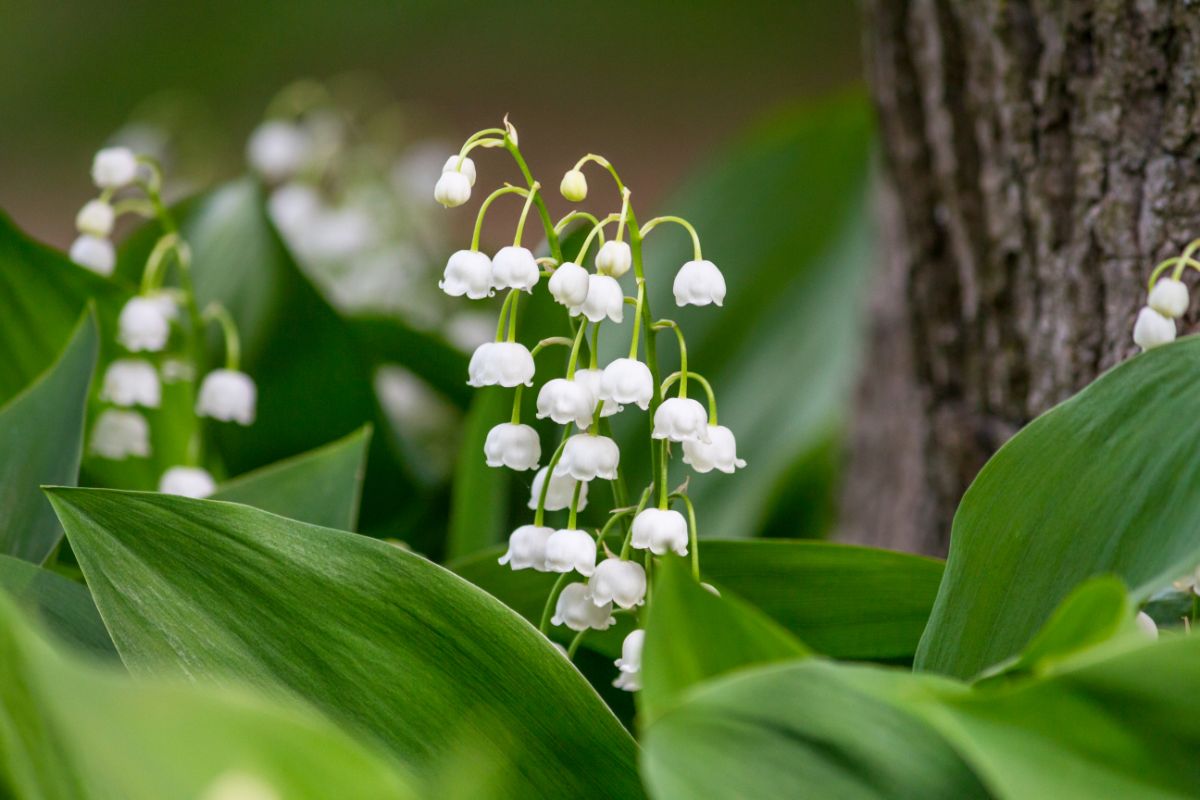
One of the best shades-loving perennial plants is the popularly known Lily of the Valley. It is a stunning plant that sprawls all over the ground enjoying all parts of its shady environment. However, it can spread readily, so if you want to curb it, you must always check it.
On the other hand, if you allow it to spread all over, it will also be beneficial, as it is bound to produce lovely, lush, and beautiful blooms in the spring while also serving as a perfect ground cover solution.
The convallaria majalis, as scientifically called, features fluted leaves with deep-green color and pretty white bell-shaped blooms.
The most exciting part of the sun-loving Lily of the Valley is the lovely floral fragrance it oozes everywhere. It is a dwarf plant of around 6 to 12 inches long-blooming perennial. Meanwhile, it is resistant to deer and rabbits and hardy in zones 2 to 7.
17. Sweet Woodruff (Galium odoratum)
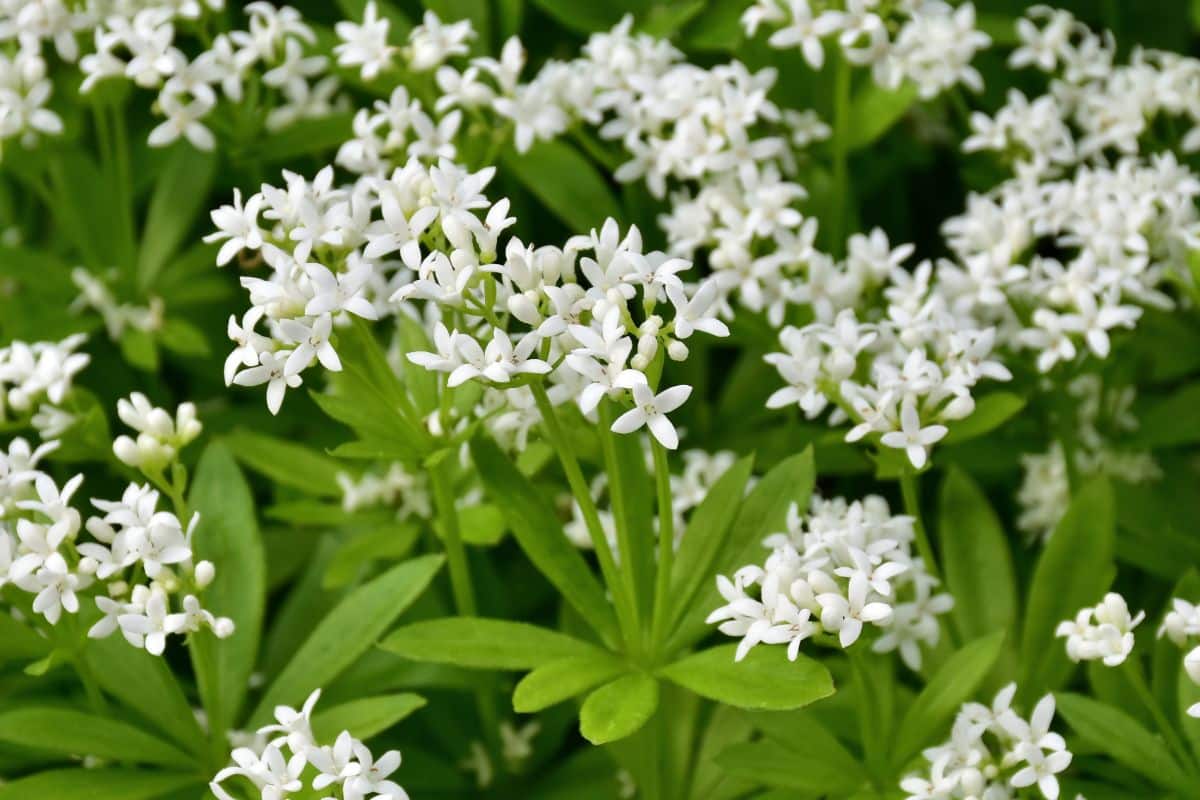
The Sweet Woodruff is a stunningly fragrant ground cover flowering perennial thrives in partial or complete shade. In other words, it is one of the most heavily scented perennials that produces a deep flowery scent all summer and spring. It is hardy in zones 4 to 8.
Galium odoratum, as scientifically called, features little foliage, often between 6 to 12 inches tall and deep-green, lance-shaped leaves.
It produces soft white, four-petaled clusters transforming the ground into a beautiful ground cover. This unique plant can spread uncontrollably in the right conditions, so keeping it in check would help.
Meanwhile, the best place to grow this unique specie with dainty blooms is in rock gardens, surrounding more giant shrubs and perennials, and edging around flower beds. Native to the European region, sweet woodruff is hardy in zones 4 to 8 and prefers moist, well-drained soil.
18. Black Cohosh (Actaea racemosa)
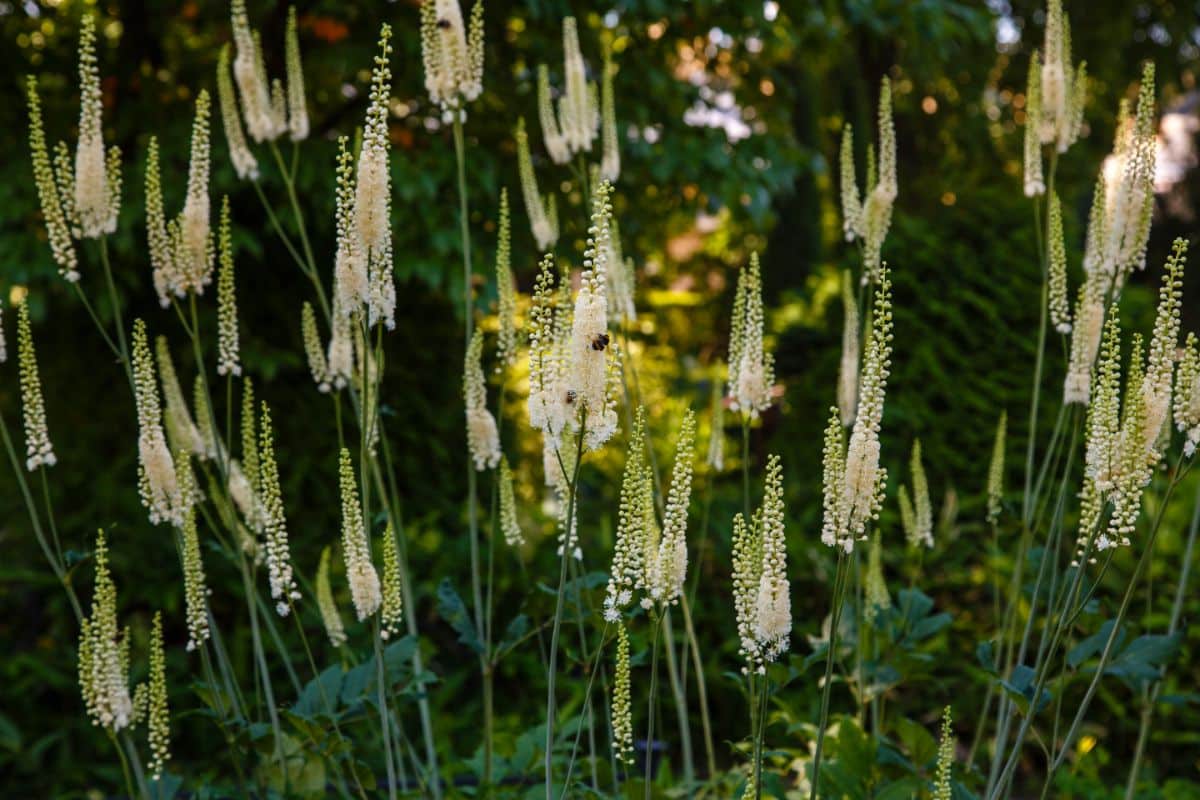
Black Cohosh is a shade loving perennial plant that is an excellent addition to your landscape. Hardy in zones 3 to 8, this beautiful dark foliage and spring beauties produce slender white perennial blooms. It is a tall plant that can grow up to 6 feet in height, thus making it taller than most perennials on our top list.
The Actaea racemosa is a stunning flowering perennial that produces flowers from late summer to early autumn, but it depends on your zone.
In other words, it is an excellent option if you are looking to grow a late-season perennial. Like other shade loving perennials on our list, black cohosh can survive different growing conditions, including a little drought season.
19. Rodgersia (Rodgersia aesculifolia)
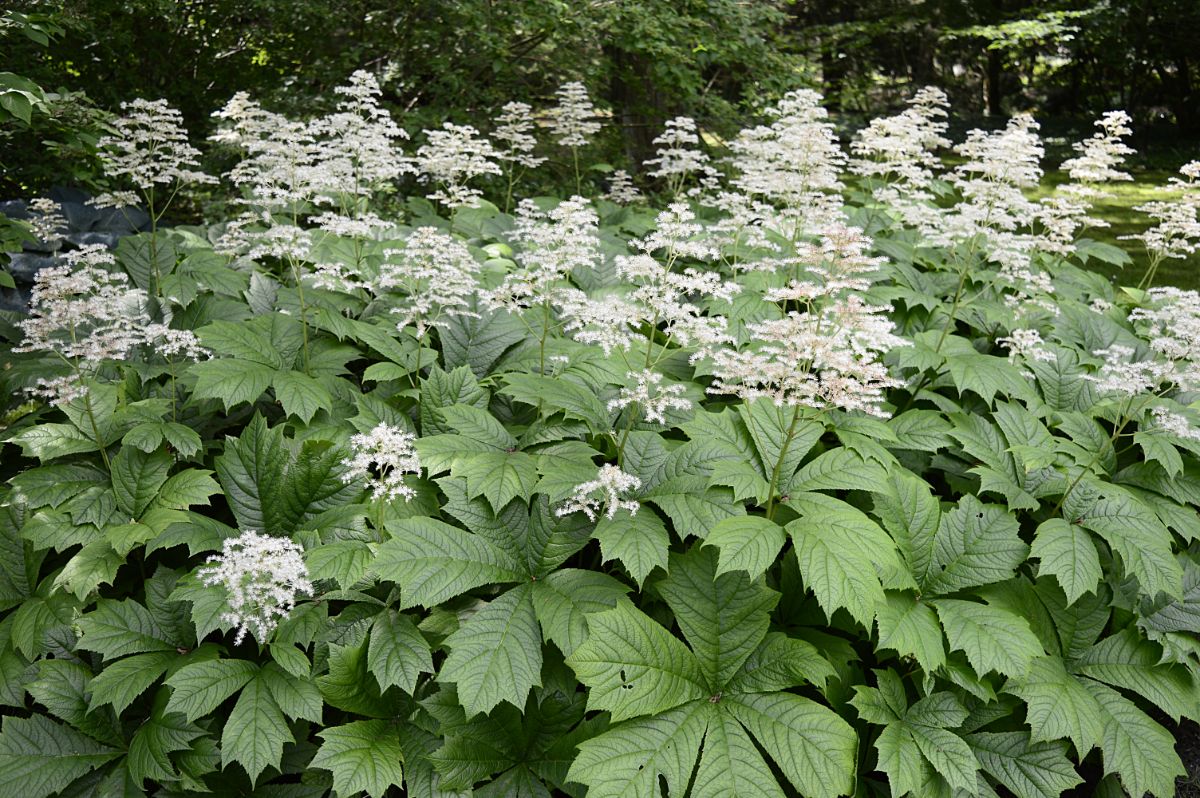
Talking about the most popular shade loving perennial flowering perennials, the Rodgersia is one of the favorites among gardeners.
Hardy, in zones 5 to 8, is a huge summer flowering perennial that does best in the part shade even though it can survive under full shade conditions.
You'll be surprised that Rodgersia shares almost the same growing pattern with Hostas because it reaches up to 3 to 5 feet tall and wide, with individual leaves about 1 foot long.
This unique specie blooms light pink or white flowers all summer. Its flowers on stems can get up to 18 inches to 2 feet above the plant's top.
20. Berry Exciting Corydalis (Corydalis anthriscifolia 'Berry Exciting')
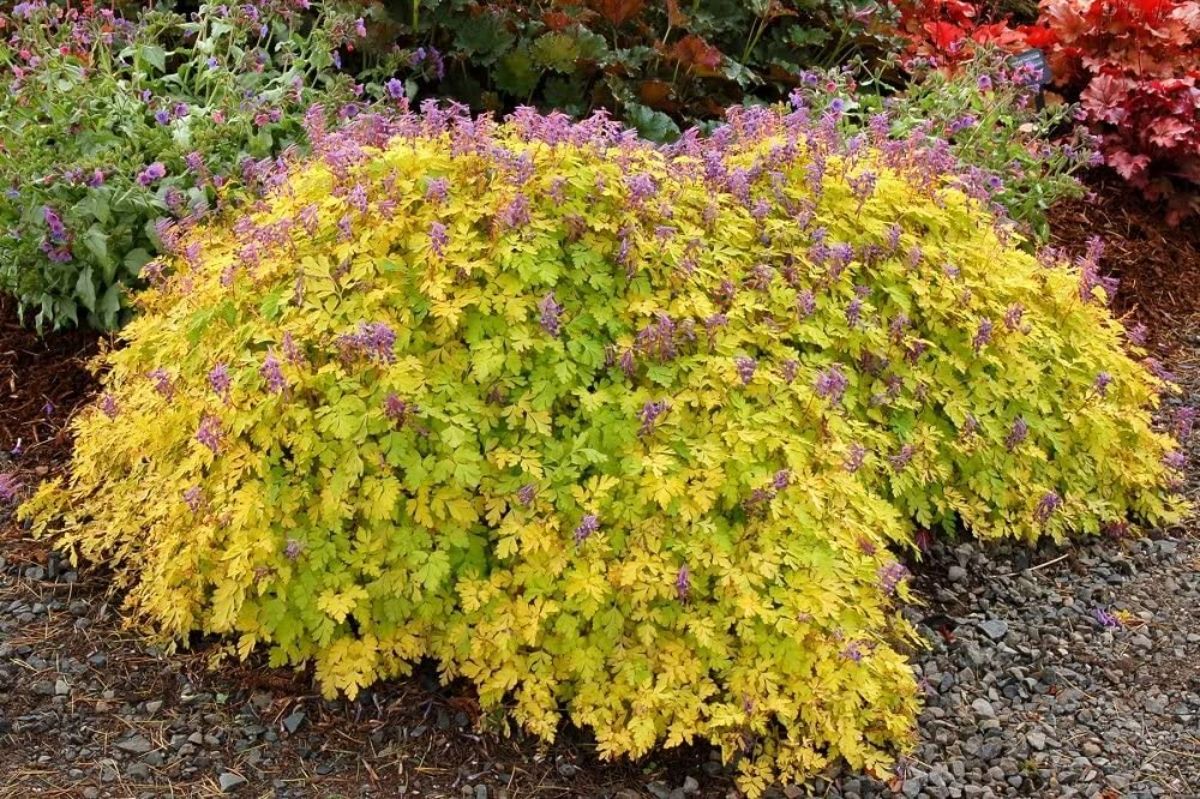
As far as the shade-loving Berry Exciting Corydalis specie is concerned, it shares almost the same features as Yellow Bleeding-Heart Specie.
In other words, it features beautiful, delicate, lace-like foliage. However, the difference is that the berry exciting is bright chartreuse rather than the bleeding heart's bluish-green color.
Another interesting feature about the exciting berry corydalis is that it grows clusters of grape-purple, tubular-shaped blooms nearly throughout the summer.
The plant is hardy in USDA zones 5 to 9 and is not a drought-tolerant plant. However, it will probably become dormant if you grow it in hotter climates.
21. Toad lily (Tricyrtis species)
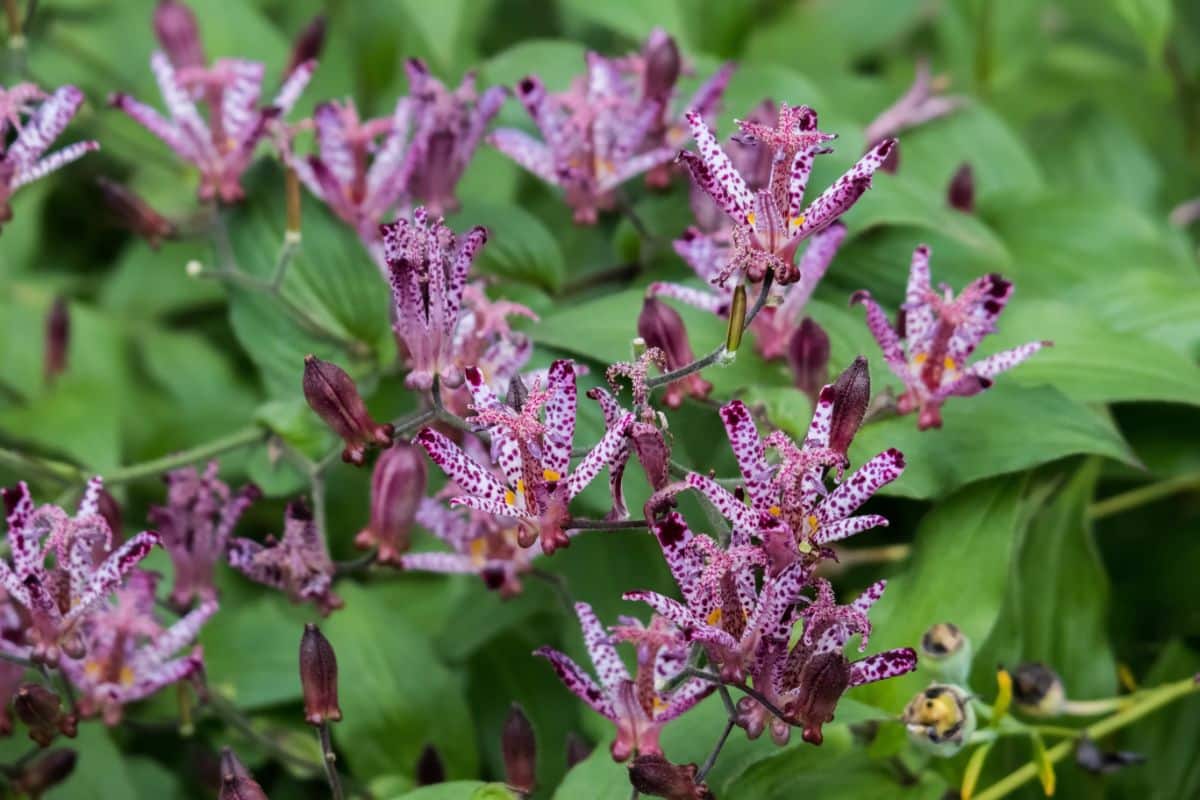
If you are looking for a unique shade loving perennial flower that will stun your garden with its beautiful colors, you can trust Toadlily to offer you even much more.
It has the looks of an orchid and produces flowers in the late season; these late-season blooms can stop their companions from progressing.
Toad lily has several varieties, many of which feature white flowers with shades of Pink, rose, or burgundy. Its leaves are wrapped around the stalks and come in different heights, depending on your chosen type.
Meanwhile, this stunning perennial is hardy in zones 5 to 8 and has an excellent spreading ability that is not invasive.
22. Rozanne (Geranium great)
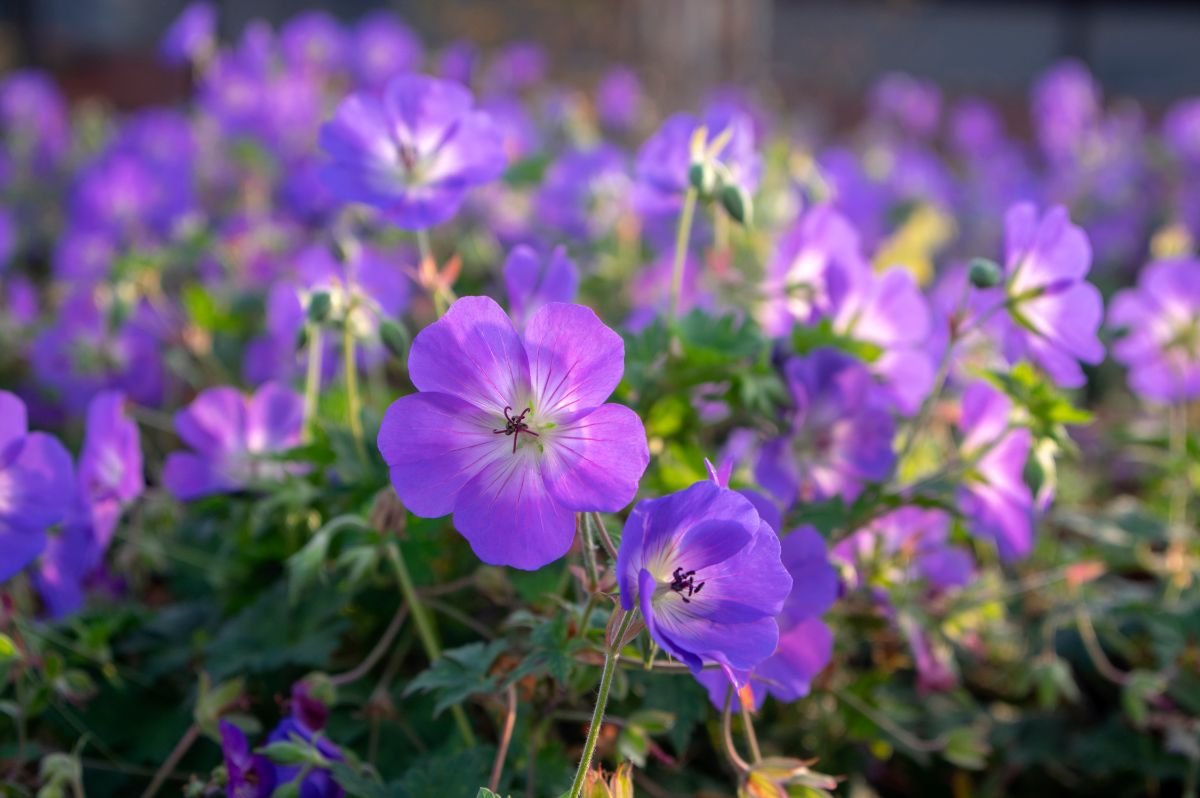
Rozanne is another shade loving perennial plant popularly known for its beautiful gradient purple flowers. Hardy in USDA zones 5 to 7, this stunning perennial specie is a great summer garden option thanks in large parts to its lovely blooms that it produces throughout the whole summer.
Meanwhile, it is also called Hardy Geranium and Cranesbill because it shares similar traits and does best in partial shade conditions.
It can survive as small as 3 hours of sunlight daily and is a compact plant planted in mounds, thus offering an ideal choice for border plantings or ground covers.
23. Columbine (Aquilegia spp.)
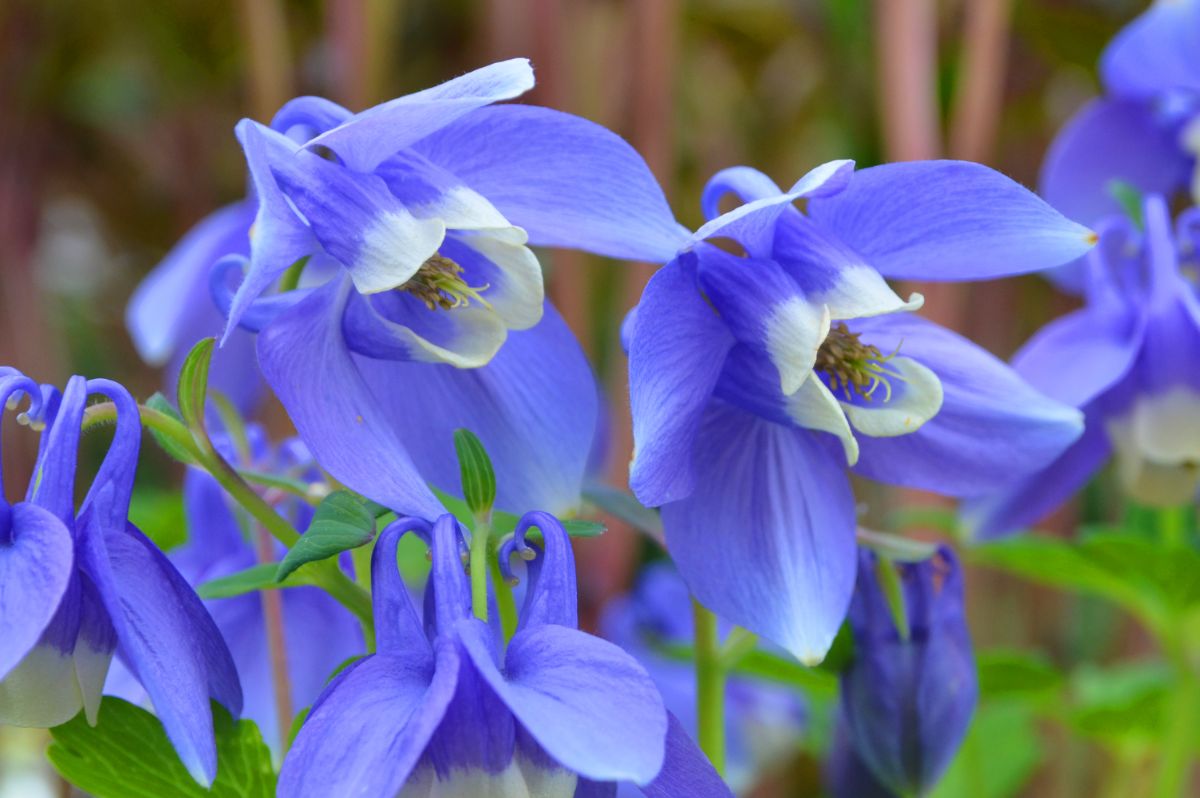
With the shade-loving Columbine, you can count on different pollinators benefiting from your garden. This stunning perennial species produces distinctly shaped flowers that feature a wide range of colors from white, pink, red, yellow and purple.
Hardy in zones 3 to 8, the aquilegia species can often grow up to 2 feet tall. It is also among the few shade loving perennials that can survive well in both sun and partial shade.
However, it will dislike poorly drained or arid soil. Mulching will enhance its drainage features, and you can quickly begin its growth from seed.
24. Big Betony (Stachys macrantha)
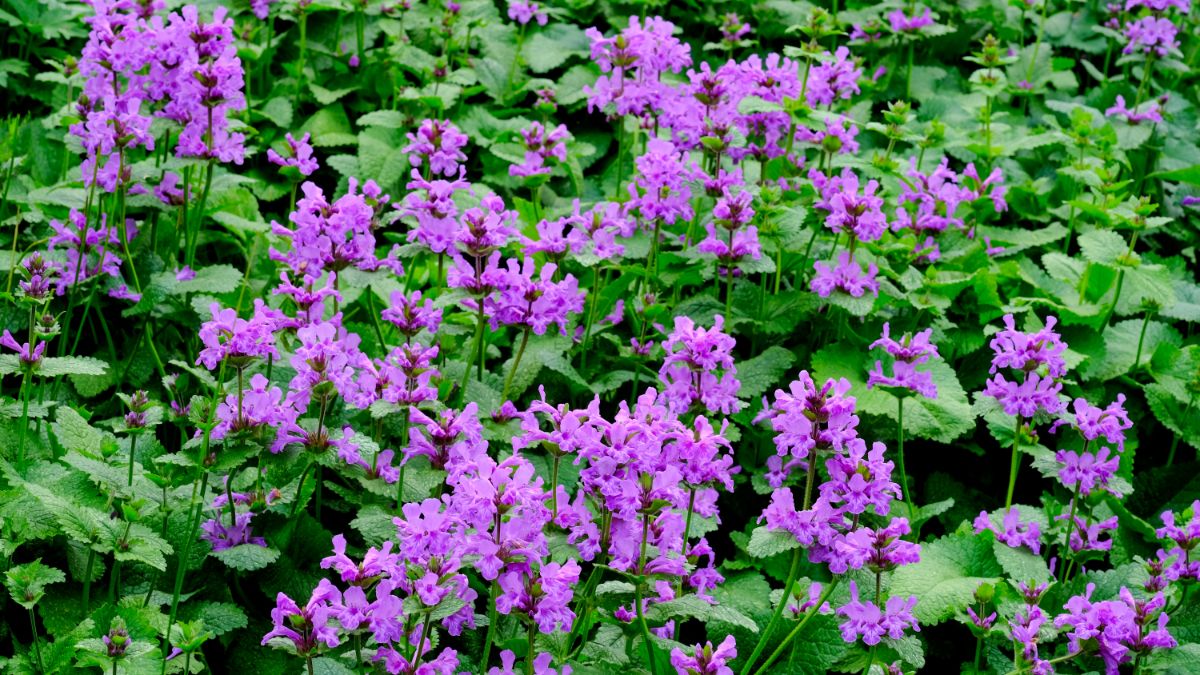
Even though it is not as popular as others on this list, Big Betony is still one of the best shades loving perennial flowering plants. It produces bright violet-purple flowers on a colorful display in late spring, thus attracting bees and other pollinators. It is hardy in zones 4 to 8.
Big betony is a shade loving perennial that thrives in a partially shaded condition and is one of the easiest to maintain of all the perennials on our list.
It is also resistant to deer and grows flowers displayed on the textured dark-green leaves for many weeks, thus producing wide ranges of color in the shade garden.
25. Deadnettle (Lamium purpurem)
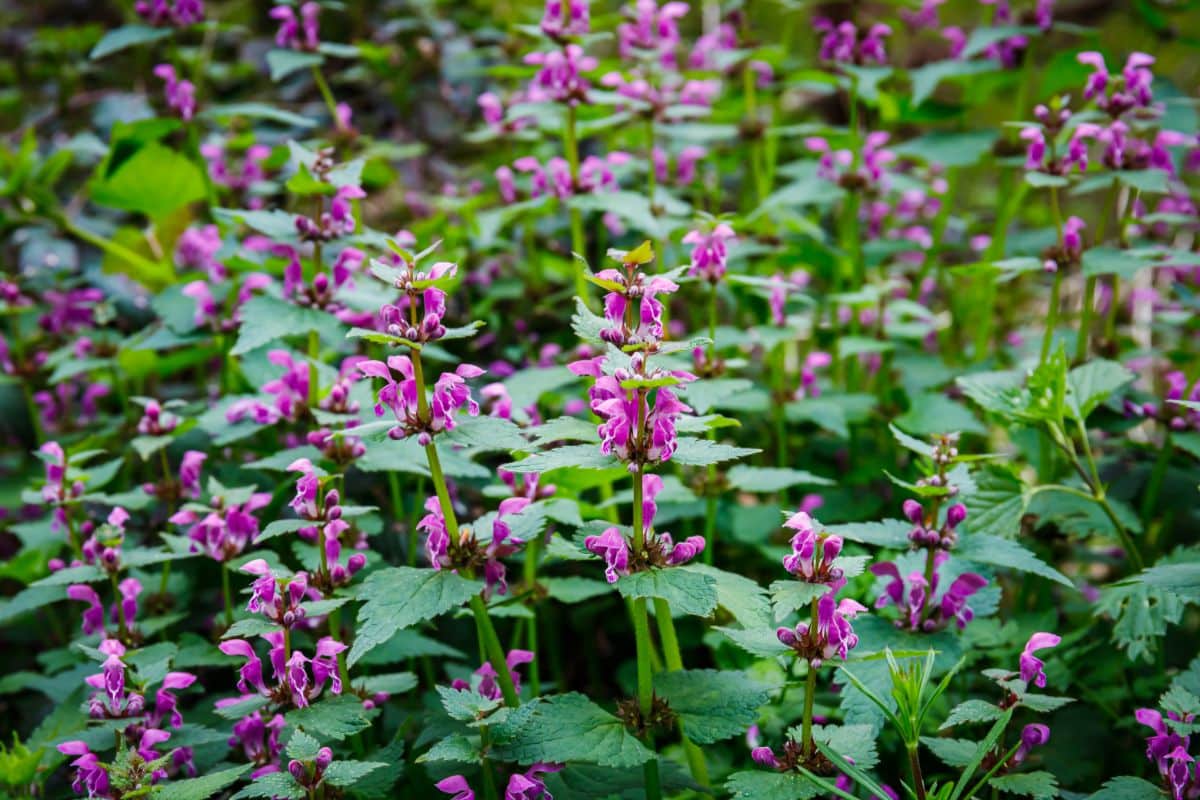
And concluding our top list!!! Deadnettle produces beautiful flowers throughout the summer, and its blooms come in various colors, including white, pink, and purple. Thanks to its lovely colored flowers and gorgeous green foliage, it can brighten any shaded garden.
Deadnettle is among the most popular shade-loving perennials on our list, especially considering that it not only thrives in the shade but can also survive in several other conditions. It is a unique plant that loves moist, well-drained soil and can reach about eight inches tall.
It is an ideal groundcover option and ensures you contain it properly to avoid unnecessary spread. Meanwhile, the Lamium purpurem, as scientifically called, is hardy in zones 4 to 8.
There are so many shade loving perennial flowers and plants, but how do we grow or maintain them? Read on to find out.
How to Grow Shade Loving Perennial Plants
If you are preparing to raise a shade garden but are confused about the best method of doing it. It will be helpful to draw out a proper shade garden and ensure your choice of plants is available as we share our essential growing tips for shade loving perennial flowers & plants for a stunning shade garden.
Soil Tips
Of course!!! Soil is vital, as every plant will only grow as lovely as the soil you plant them with. As soil is essential to other gardens, it is to shade gardens; therefore, it would help if you have the ideal soil that will enable your plants to grow well. Plants are often ideally suited to planting in their native conditions.
Shade-loving perennials are perfect in the shade since they are significantly used to shady environments in their natural habitat for several years. Meanwhile, in their native habitat, they grow in forested areas covered by a massive canopy of trees that offers shade.
The soil therein is light and airy and has plenty of organic matter from the turn-over of organic materials. Hence, it is the perfect soil that the shade gardens will need to thrive, which means loamy, humus, rich, loose, yet well-draining soil.
Watering Tips
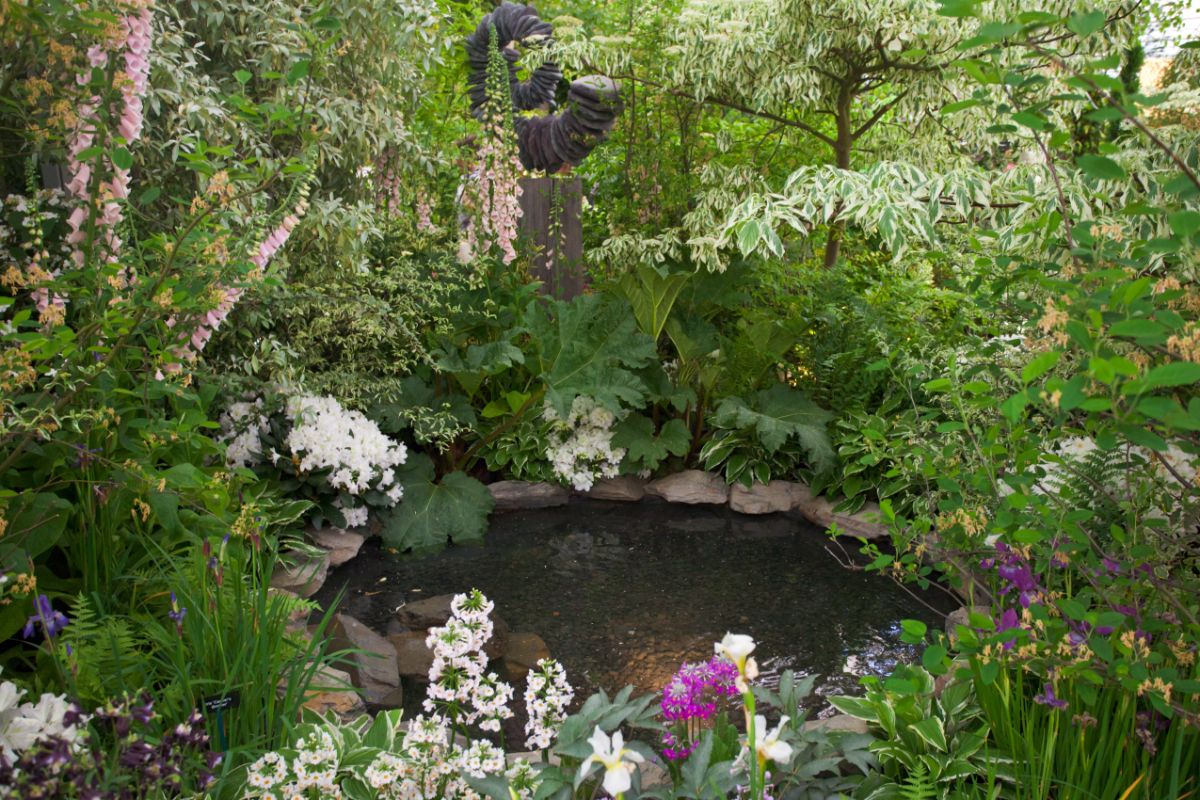
Watering is essential in any garden, including a shade garden. Therefore, if your shade loving perennial flowers and plants must survive and grow healthier, you must ensure the plants get the proper watering routine.
Meanwhile, shade-loving perennials love sufficient watering, as indicated by their native habitat, primarily close to river banks and streams. Most of these plants do not like lacking water completely, so it's best to keep them moderately moist.
If you have light and fluffy soil full of organic matter, it will need to absorb water while draining the excess to avoid pooling. Sometimes, rainwater is sufficient to make your shade garden remain lush. But in warmer climates, it might not be enough; hence you need additional watering when due.
Mulching Tips
As long as shade-loving plants are concerned, mulching is essential. You can use bark mulch as an alternative if no options exist. Mulching will serve as a sponge to retain water and gradually emit it into the soil.
Fertilizing Tips
Fertilizing is essential with most shade loving perennial flowers and plants. Instead of commercially manufactured fertilizer, you can top-dress the compost to provide your plants with the required nutrients.
You can feed them with a natural organic product from the sea, as it will boost the micronutrients and the general health of your soil.
We recommend you go for a locally-produced fertilizer from a local garden center, like a dark black liquid featuring a 0-0-6 mix, chalk-filled with micronutrients. You can also use worm casting tea, and local produce, amongst other ideal alternatives.
Wind protection
If you want to get the best from your shade loving perennial flowers, you must grow them in a place that gets enough protection from wind.
It is just like what they have in their natural habitat with tree canopies. Therefore, many of them, including hostas and ferns, will not do well when affected by excessive wind. It will cause their leaves to shred and curl.
To prevent these issues, you must create small pockets or microclimates to protect them from the weather. You can ensure this by growing trees nearby or growing a shade-loving shrub in the direction the devastating wind in your region will likely come from.
Dry Shade
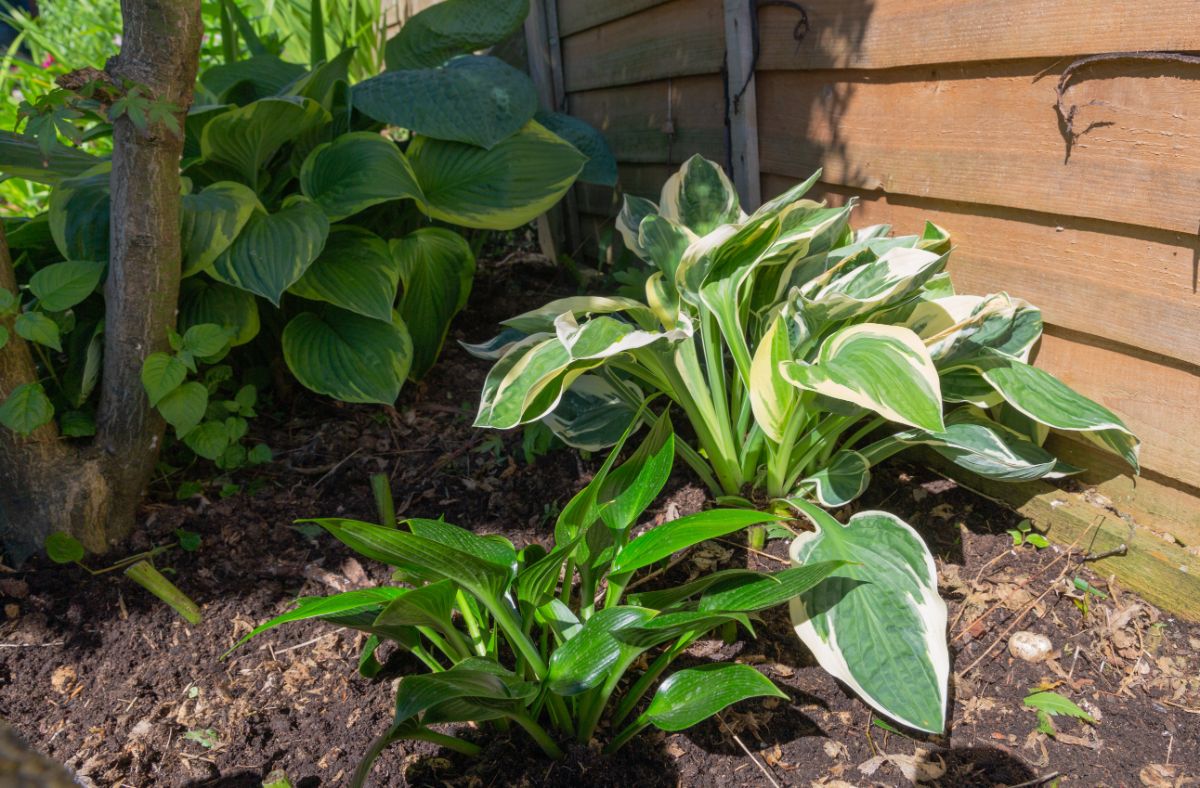
Before you plant a shade loving perennial, you must consider the shaded area that is a little bit on the dry side, like dry shades under large trees. However, other places in your landscape are dry shades. To avoid stressing yourself with watering and amending, you can work with the soil.
Therefore, you go for plants that can tolerate dry shade, such as Bergenia, Lamium, Pulmonaria, Lily of the Valley, and Rhubarb. All of the perennials, as mentioned earlier, are perfect ground covers except rhubarb.
Still covering a dry shade area in a hardy, stubborn ground cover can sometimes be the best thing to do if you want something green. Again, you must vary the soil types for texture addition or just a single one for the same large mass.
Pests & Diseases Control
Like other garden conditions like full sun gardens, shade gardens are not immune to pests and diseases. The most common problems that attack shade-loving plants are slugs and snails.
Since shade loving perennial plants prefer damp shady conditions, they will attract slugs and snails, which, unfortunately, also love those conditions.
They enjoy eating deep into these shade-loving plants, which can be devastating. However, if you must control them, you must prepare a slug bait and spray it through your garden every week, thus reducing the number of slugs to a great extent.
It is a far easier alternative than hand-picking the slugs off whenever you see them. You can always find these slugs in small groups hanging around the stems. You can also try the clever method of luring the slugs into a beer tray. However, the best approach remains the slug bait.
Frequently Asked Questions
Which is the most shade loving plant?
There are several shade loving plants, but the most shade loving of them is Heucheras. They are gorgeous, mound-forming plants that survive growing in partial shade but do best in complete shade conditions. Heuchera has many cultivars to select from, coming in a wide range of unique colors and types. Some species are tolerant of dry soils, while others love damper areas.
Do hydrangeas like shade?
Indeed, Hydrangeas are one of the most popular shade loving perennial flowers. They thrive in moist, well-drained soil and dappled shade. In other words, they dislike full sun or shade, just somewhere in between. However, they are widely believed to be like partial shade conditions.
If you get the desired effect from hydrangeas, you must ensure they avoid south-facing positions, especially if the soil is arid. For a shaded area, like a north-facing wall, plant the climbing hydrangea Hydrangea anomala subsp. petiolaris.
Can hydrangeas grow in full shade?
We mentioned earlier that Hydrangeas grow best in a condition that is somewhere between the full sun (more than 6 hours of sun) to partial sun (4-6 hours of sun). With that being said, all hydrangeas can require some shade, but you must consider the timing and type of shade. They can be in full shade during the hottest part of the day, as long as they get some morning sun.
What plants do well in shade and heat?
To grow a plant that does well in shade and heat, you must consider planting torenia (wishbone flower), different types of begonias, caladiums, coleus and the "king of shade" – impatiens. Meanwhile, Impatiens is a warm-season flower that thrives in full shade. Generally, it is unsurprisingly the most-sold, warm-season bedding plant around the country, and they feature several bloom colors.
What are shade-loving plants called?
It is pretty simple. All shade-loving plants share a common name, otherwise known as Sciophytes.
Conclusion
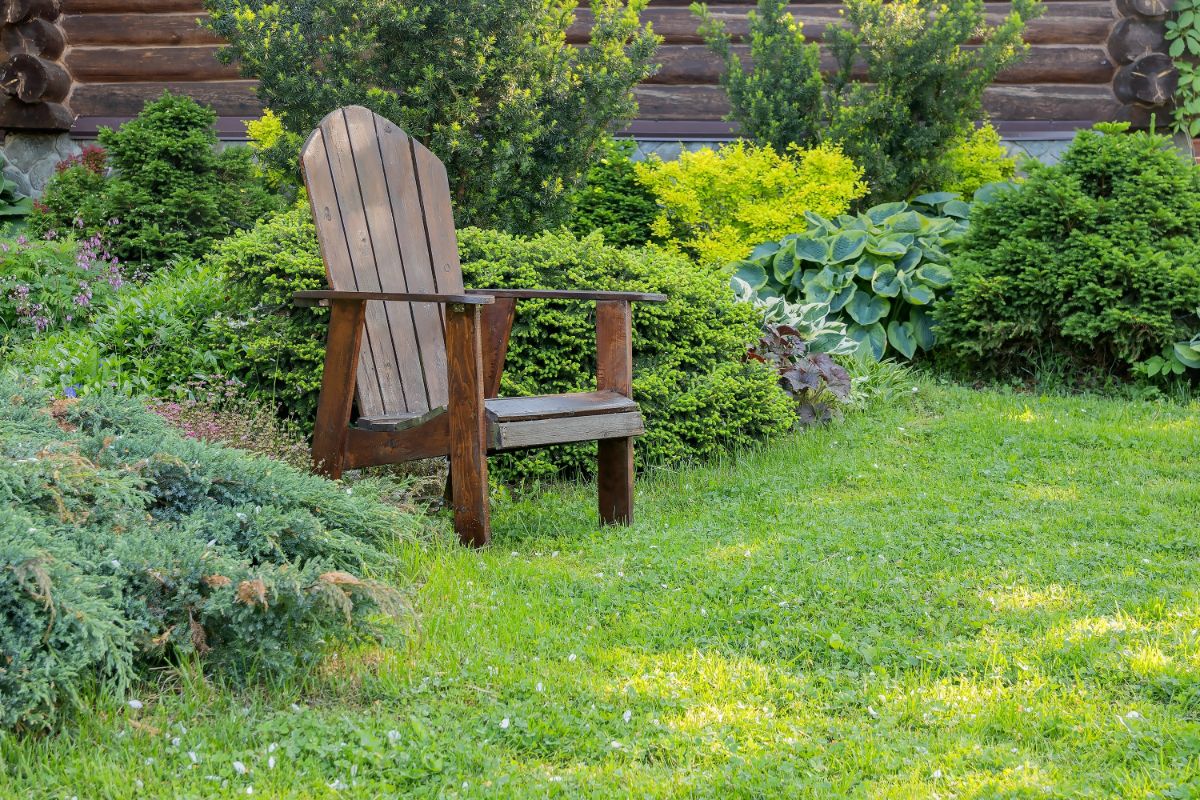
If you are a shade gardener or enthusiast, you will surely enjoy these shades-loving perennial flowers and plants in our top list, as they will offer your garden a new look. However, like sun-loving plants, shade loving perennials also require the right growing conditions if you want them to produce your desired effect.
Note that shade gardens can survive extended periods without supplemental watering. Therefore, you must check moisture levels before you start watering and ensure you water only when the soil is dry to avoid mildew and stem rot, especially with plants like Begonias and Impatiens.




